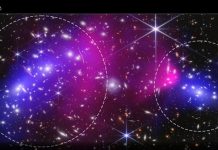
Discovery and Method
A team of astronomers has detected the first radiation belt outside our solar system, according to a study published on May 15 in Nature.
The team used a coordinated array of 39 radio dishes from Hawaii to Germany to obtain high-resolution images of an ultracool dwarf.
The images revealed the presence of a cloud of high-energy electrons trapped in the dwarf’s powerful magnetic field, forming a structure similar to Jupiter’s radiation belts.
“We are actually imaging the magnetosphere of our target by observing the radio-emitting plasma—its radiation belt—in the magnetosphere,” said Melodie Kao, a postdoctoral fellow at UC Santa Cruz and first author of the paper.
The radiation belt observed by Kao and her team is 10 million times brighter than Jupiter’s.
Significance and Future Implications
The discovery provides a new way to study the magnetic fields of objects outside of our solar system, which could have important implications for understanding the habitability of exoplanets.
The strength and shape of a planet’s magnetic field can contribute significantly to maintaining a stable environment, in addition to factors like the atmosphere and climate.
“This is a critical first step in finding many more such objects and honing our skills to search for smaller and smaller magnetospheres, eventually enabling us to study those of potentially habitable, Earth-size planets,” said co-author Evgenya Shkolnik at Arizona State University.
Looking Ahead
Kao is eager to use the Next Generation Very Large Array, which is currently being planned by the National Radio Astronomy Observatory (NRAO), to image many more extrasolar radiation belts.
The team used the High Sensitivity Array, consisting of 39 radio dishes coordinated by the NRAO in the United States and the Effelsberg radio telescope operated by the Max Planck Institute for Radio Astronomy in Germany, to capture the high-resolution images.
“By combining radio dishes from across the world, we can make incredibly high-resolution images to see things no one has ever seen before.
Our image is comparable to reading the top row of an eye chart in California while standing in Washington, D.C.,” said co-author Jackie Villadsen at Bucknell University.
The study was published in Nature.
Copyright © 2023 Knowridge Science Report. All rights reserved.



